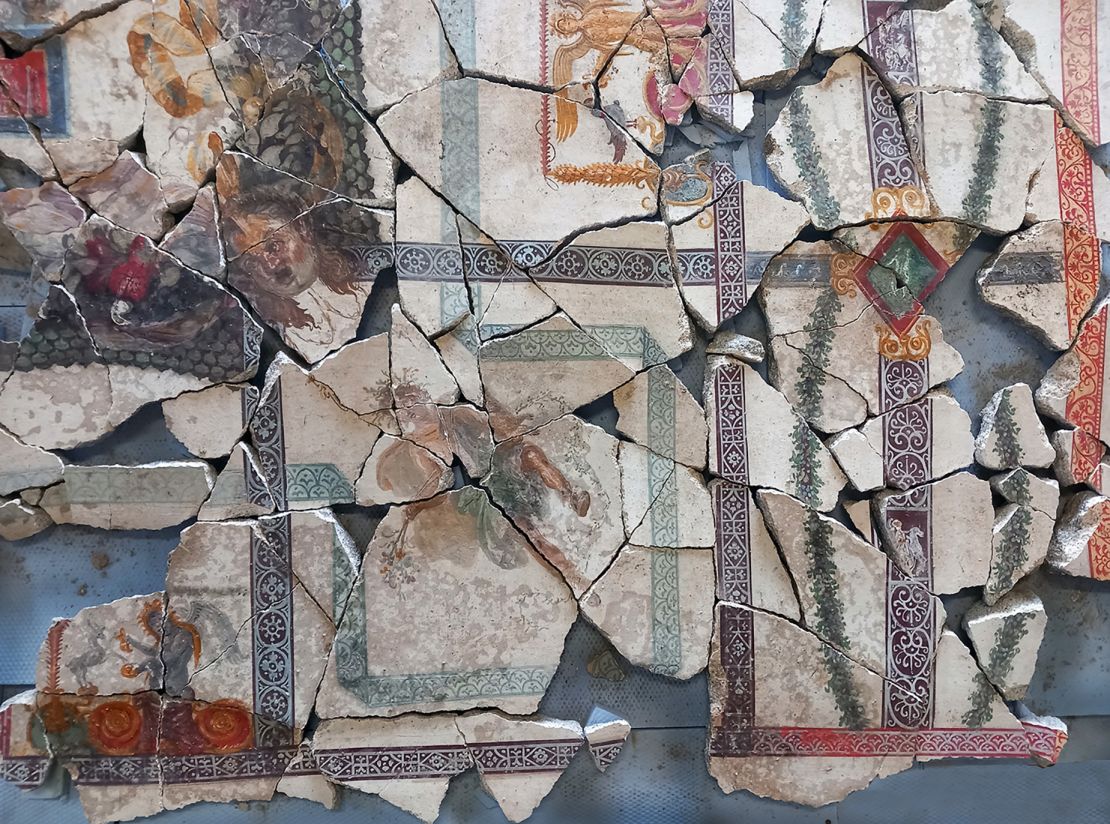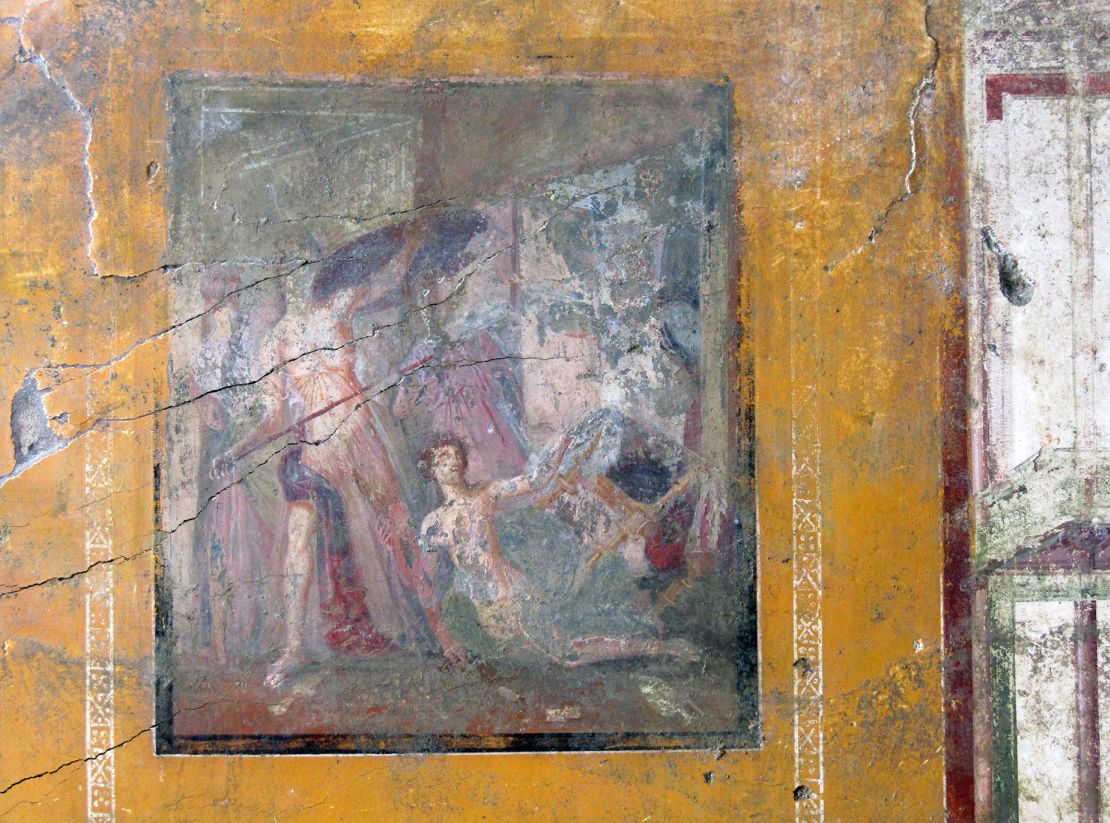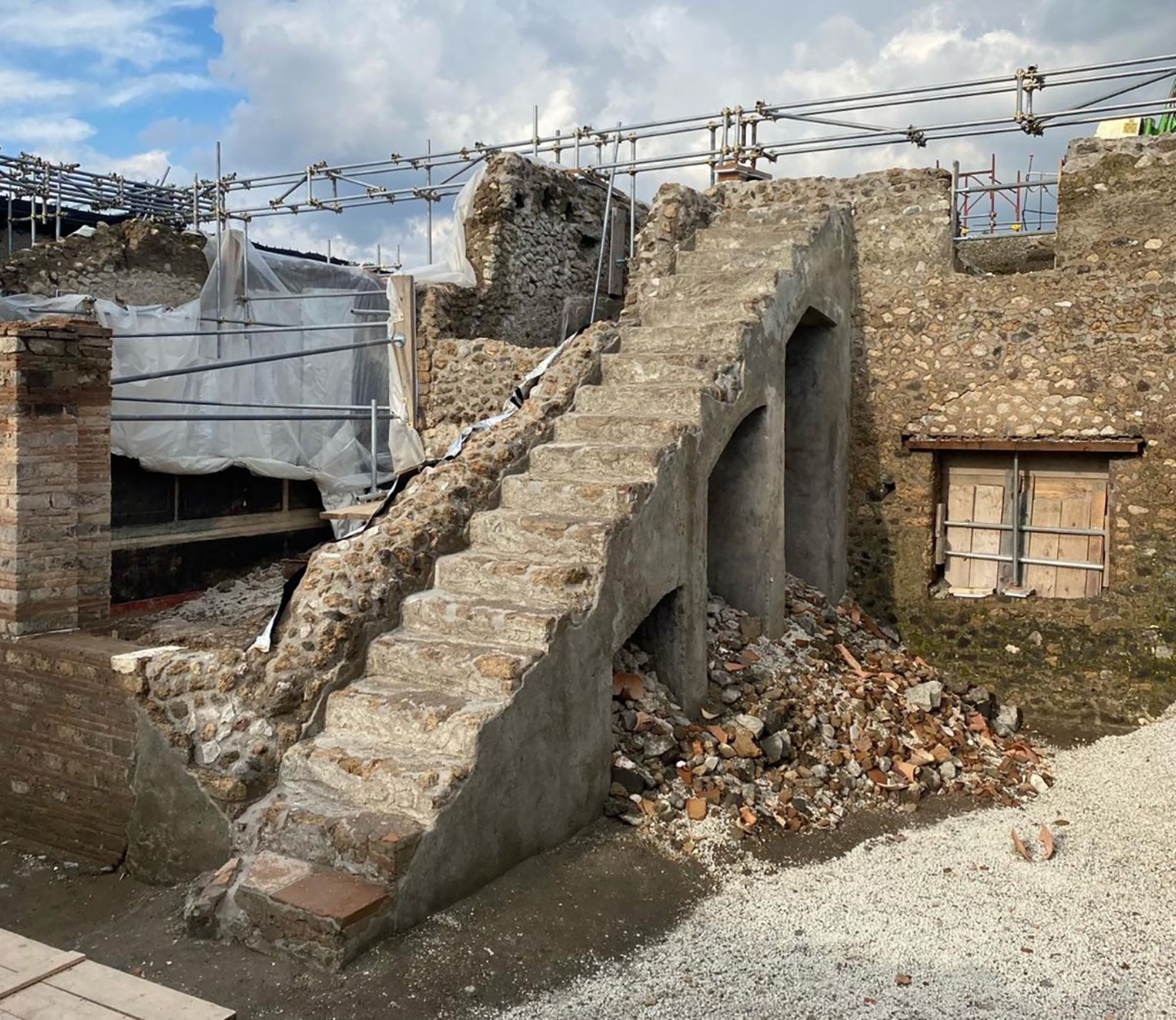Archaeologists excavating the site of Pompeii have uncovered an ancient building site, revealing Roman construction techniques used by builders at the time, according to the Italian Ministry of Culture.
The ancient Roman city of Pompeii was home to up to 20,000 people before it was destroyed in the 79 AD eruption, which was visible from more than 40 kilometers (25 miles) away. More than 2,000 people died as a direct consequence.
Now, archaeologists in Italy have unearthed further details on how the Romans were able to build such durable and iconic structures such as the Colosseum and Pantheon.
Archaeologists have found what would have been an active construction site - perhaps more accurately described as a home renovation, according to Massimo Osanna, the general director of the site, in a press statement released Monday.
“The excavation… is yielding, as expected, important results for the knowledge of the ancient city,” Osanna said.
Scholars said the home being renovated was adjacent to a bakery where slaves and donkeys were locked up together and used to power a mill.
The atrium of the house was partially open to the sky and building materials were piled up near a stairwell near the door of the tablinum or reception area that was decorated with a mythological painting of Achilles on Skyros, depicting the ancient Greek hero made famous for his escapades in the Trojan war.

There were also Roman numerals written in charcoal, likely notes made by the construction workers, according to the ministry statement.
In the latest discovery, archaeologists found evidence of jars, along with tools like lead weights for pulling up heavy walls and iron hoes used to mix the mortar.
“Even in the nearby house, reachable from an internal door, and in a large residence behind the two houses, which has so far only been partially investigated, evidence of another large construction site have been found,” the culture ministry said.
The ministry pointed to evidence of enormous piles of stones, ceramics and tiles collected to be transformed into cocciopesto, which was a common floor covering made with plaster and crushed bricks used across the ancient city.
The ongoing work follows a report by Massachusetts Institute of Technology in January 2023 which outlined why ancient concrete is so much stronger than modern concrete.
The Pompeii Archeological Park collaborated with MIT on the report.
Experts previously believed that the quicklime used to plaster walls was pre-mixed with water before it was used, but the recent discoveries instead show how workers mixed it with water on site before using it.
The result meant that it was extremely hot to use, but far more effective in giving a long lasting hardened surface, which is in line with recent research that shows that ancient concrete and construction outlasts more recent concrete.

The latest findings paint a fuller picture of how ancient Romans lived. “It is a further example of how the small city of Pompeii allows us to understand many things about the great Roman Empire, not least the use of cement,” director of the park, Gabriel Zuchtriegel, said in a statement.
“Without the cement we would not have the Colosseum nor the Pantheon, nor the Baths of Caracalla.”
“Now we are networking between research institutions to study the constructive know-how of the ancient Romans: perhaps we can learn from them, let’s think about sustainability and the reuse of materials,” Zuchtriegel added.
Italy recently increased its budget for Pompeii, which should allow even more work.
“Pompeii is a treasure chest and not everything has been revealed in its full beauty, Italy’s Minister of Culture Gennaro Sangiuliano said in a statement regarding the latest discovery. “A lot of material has yet to emerge.”
Sign up for CNN’s Wonder Theory science newsletter. Explore the universe with news on fascinating discoveries, scientific advancements and more.



